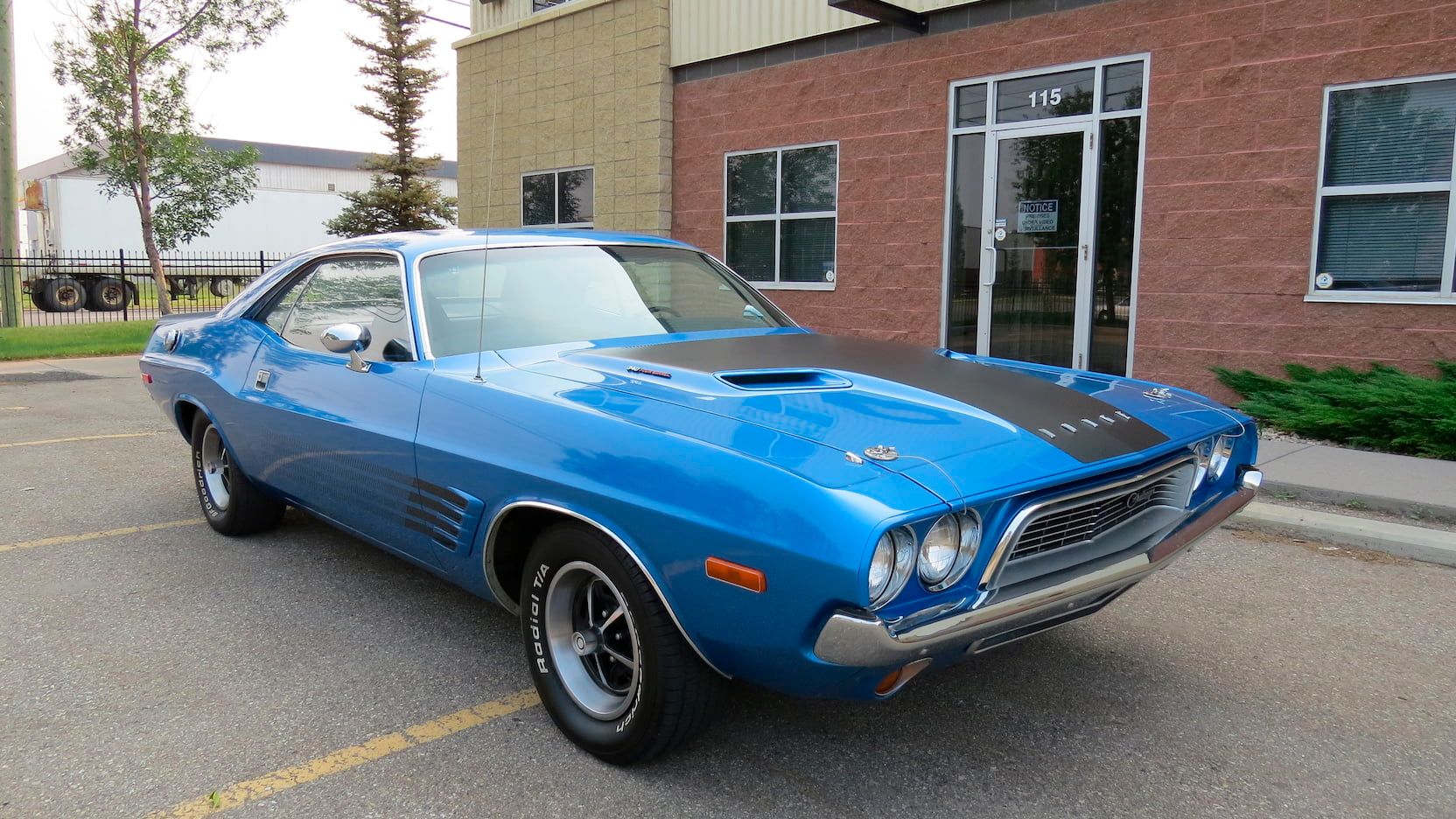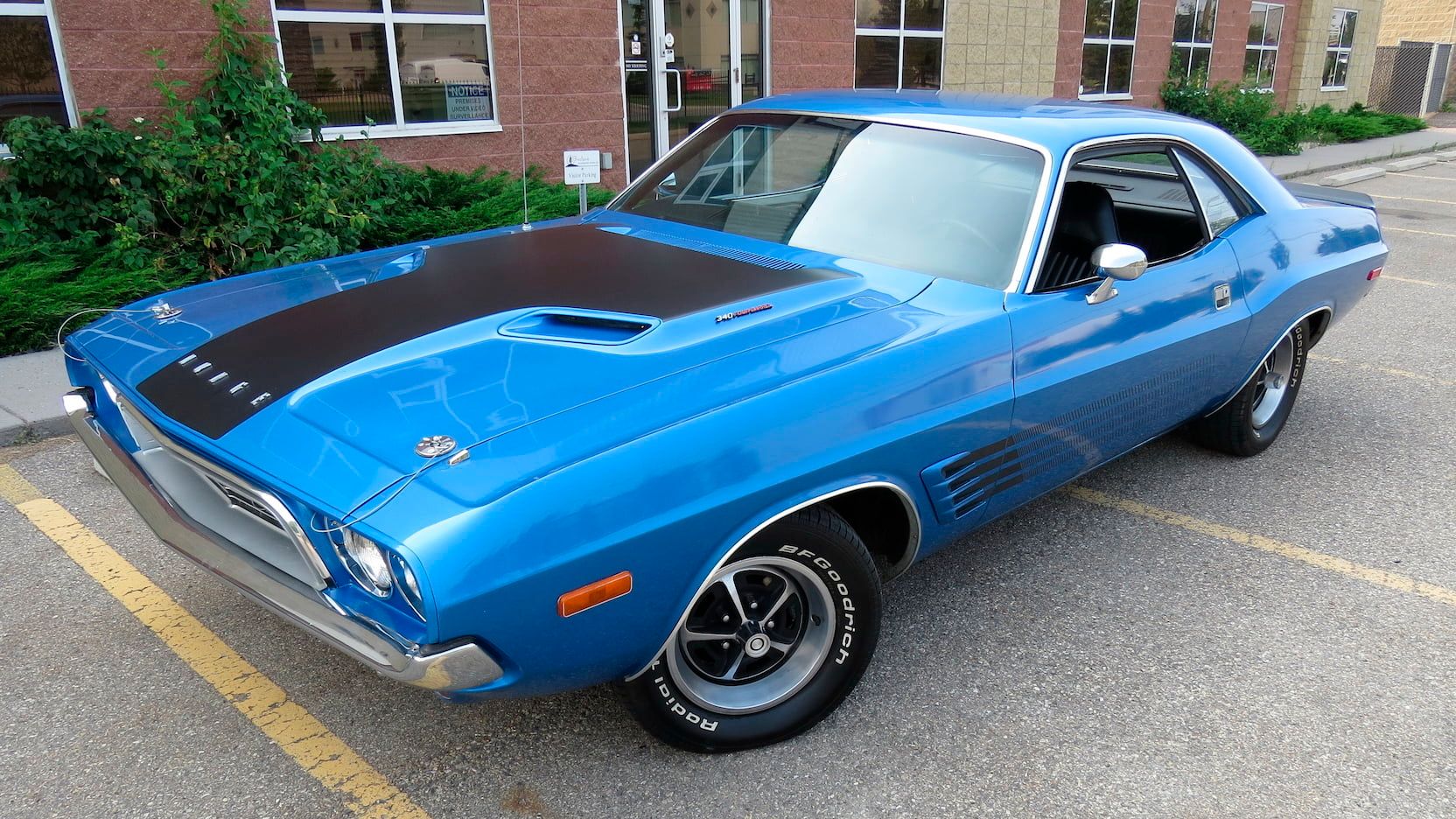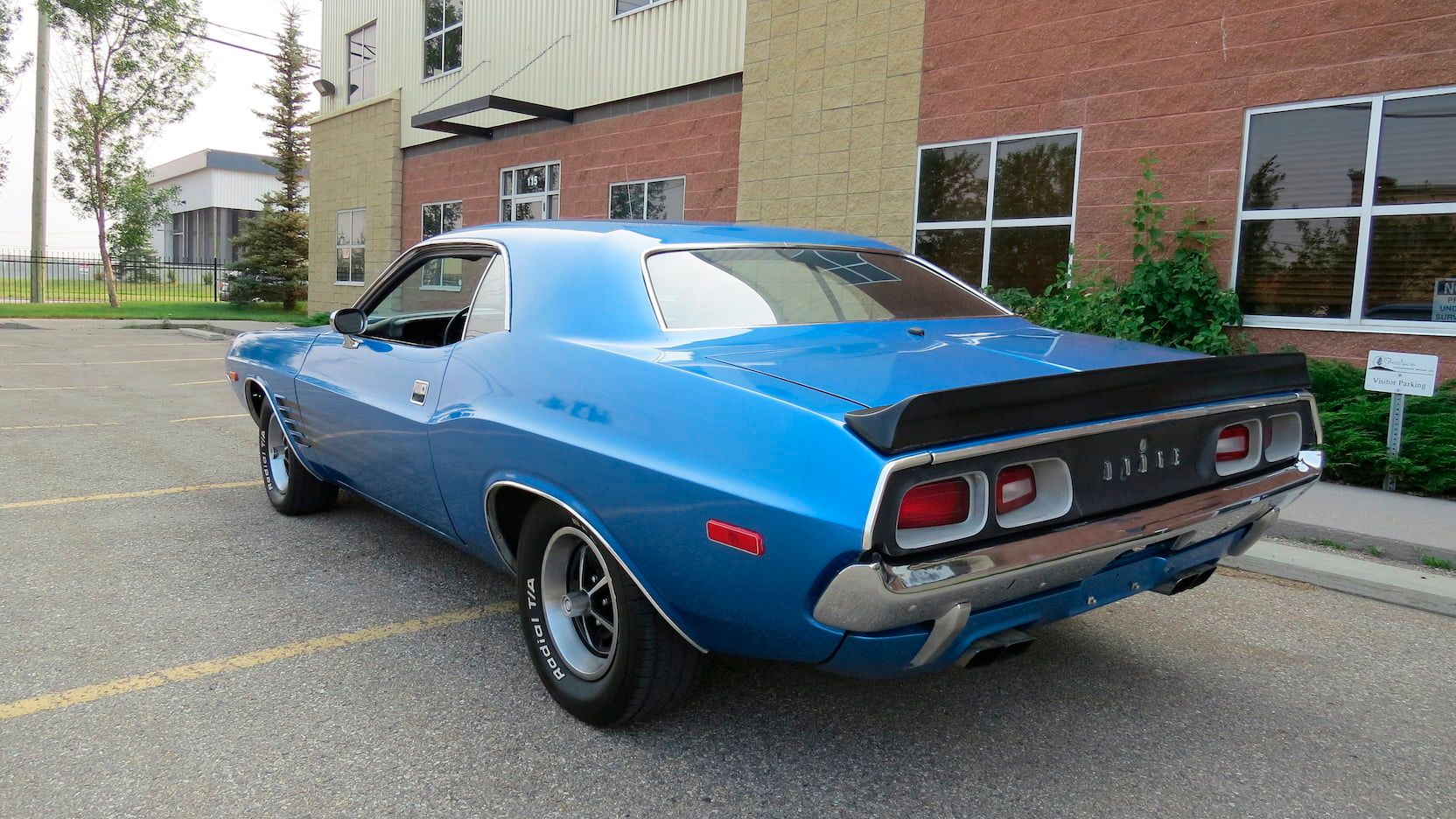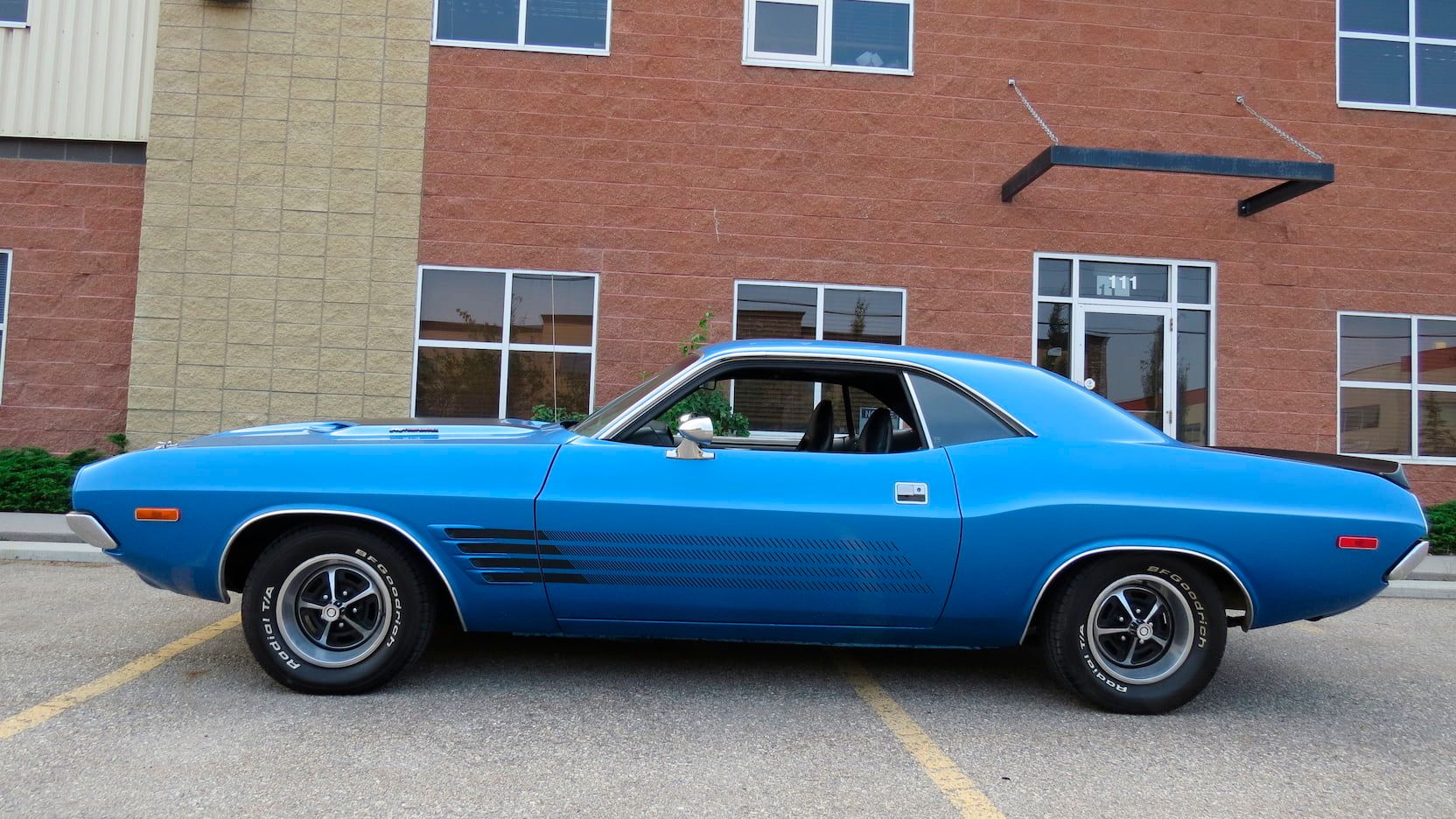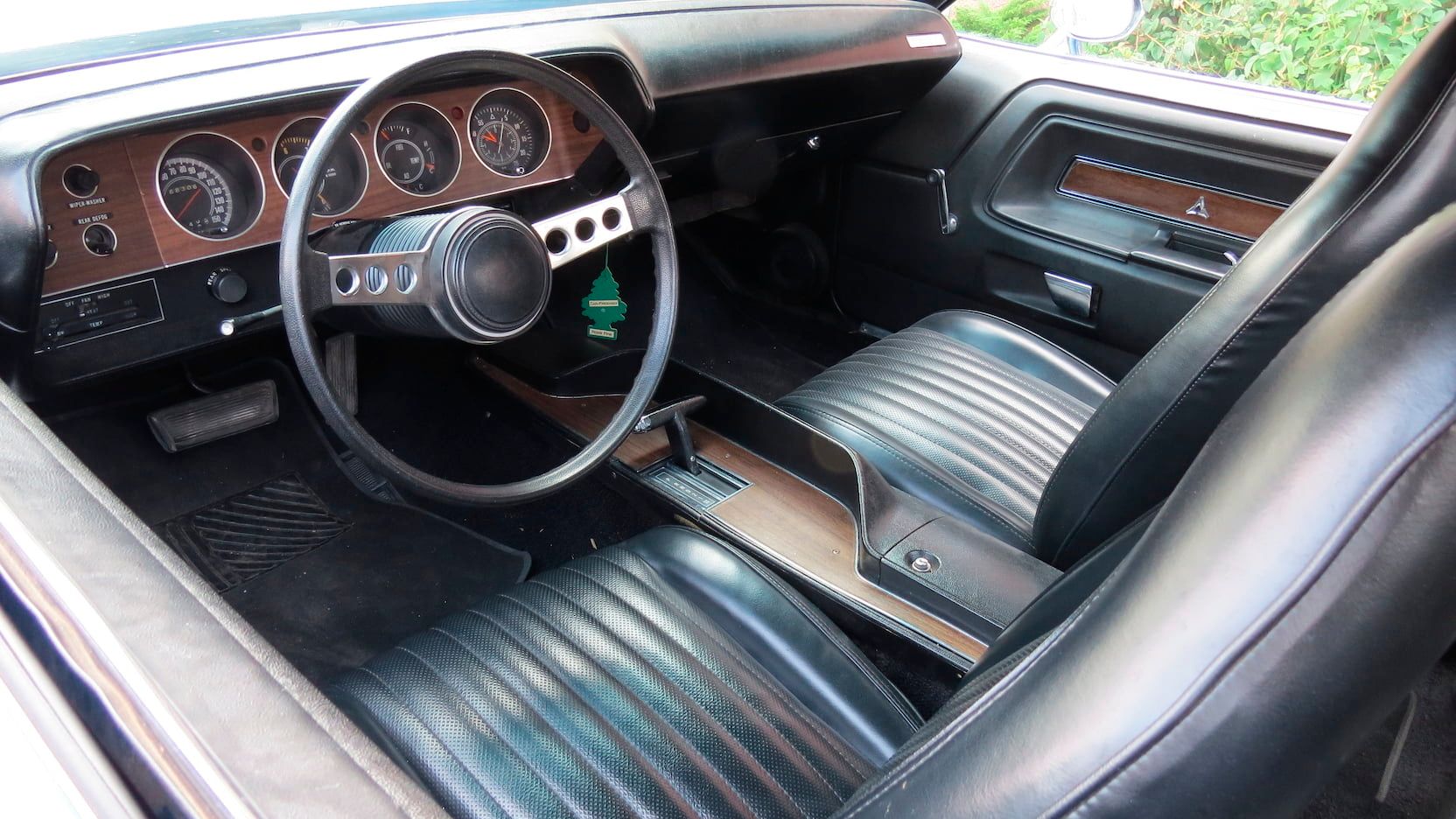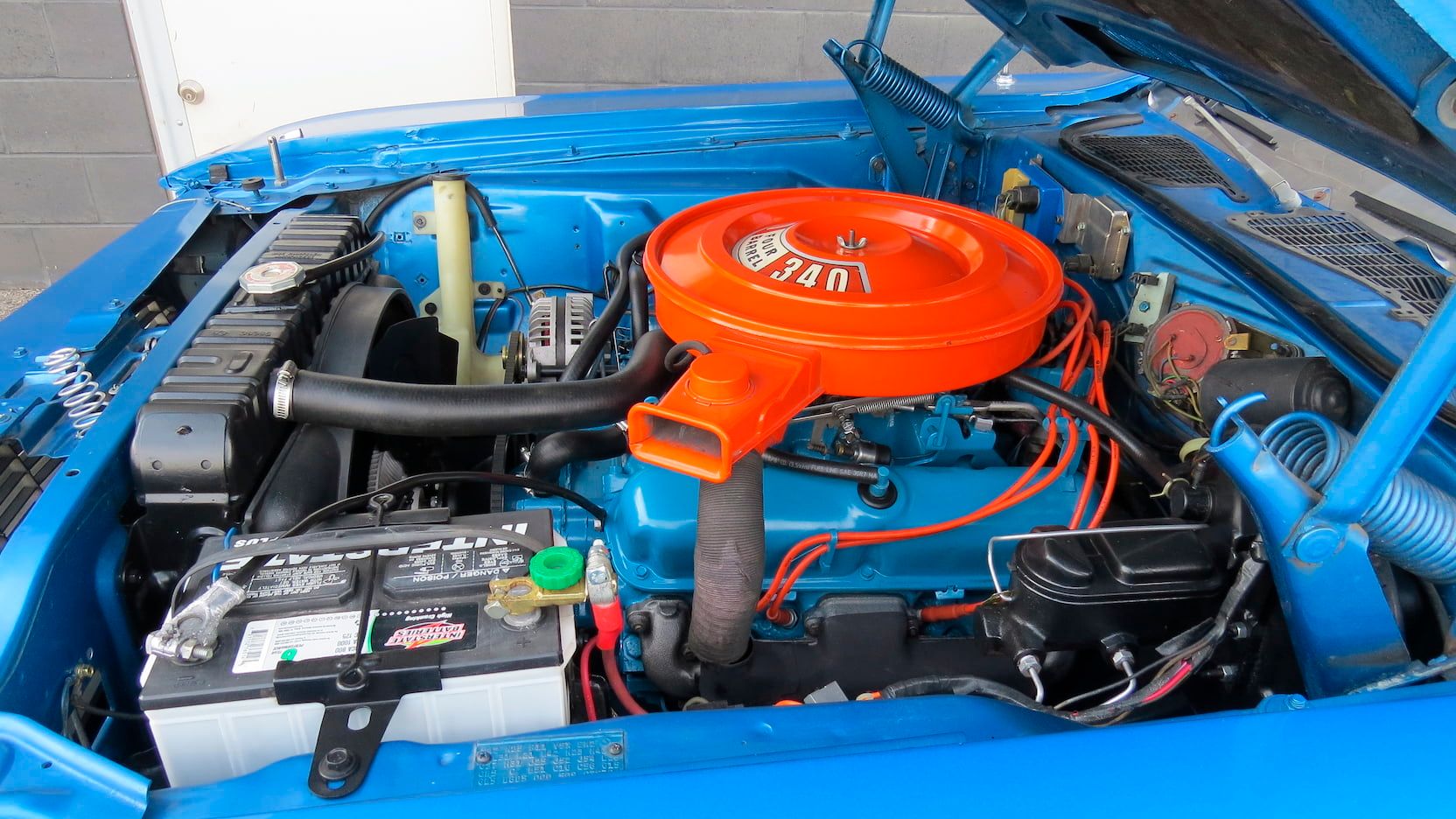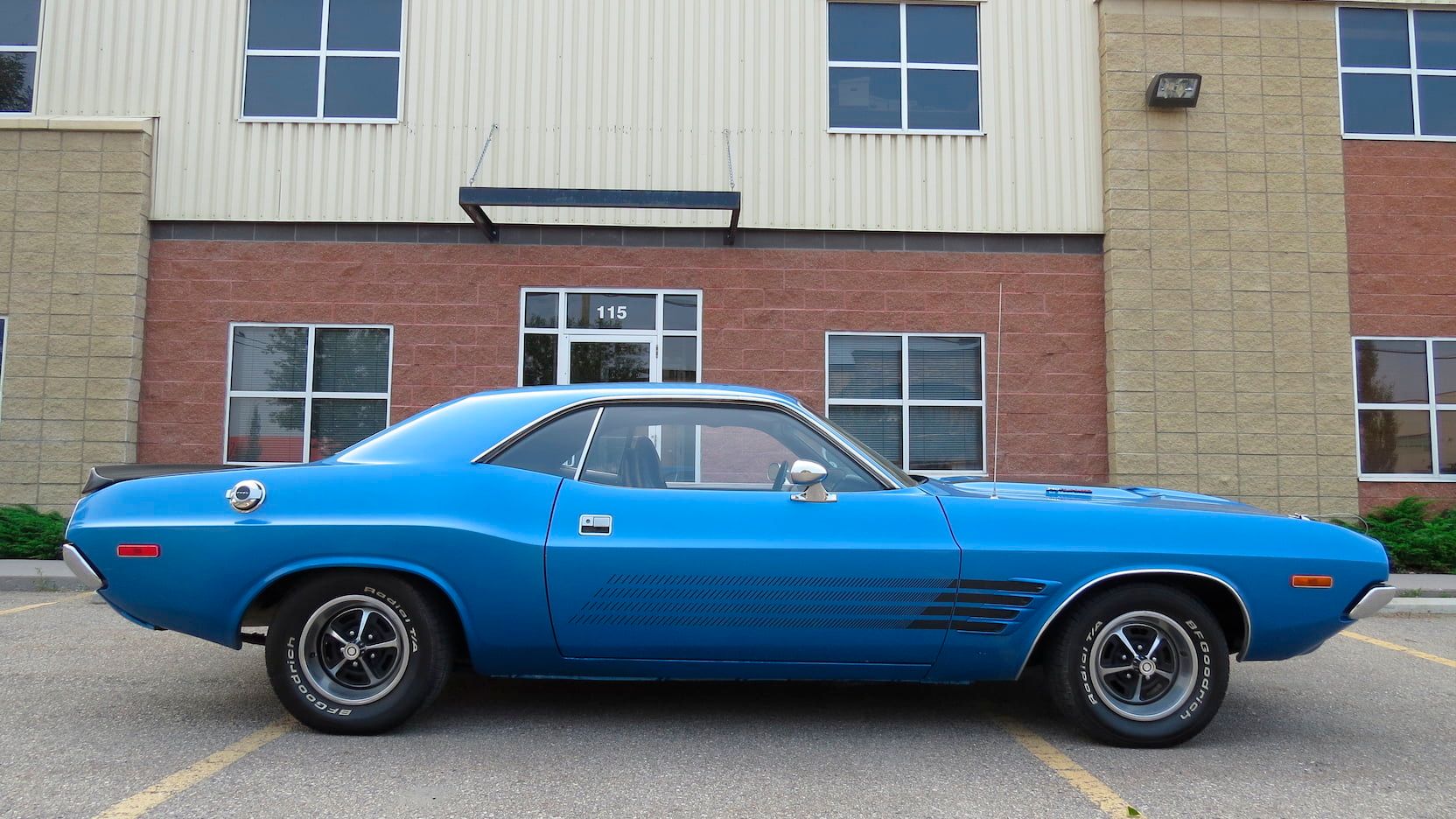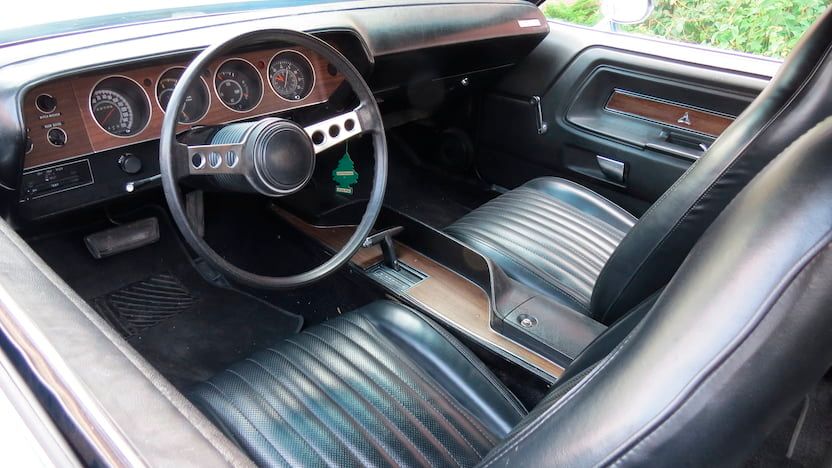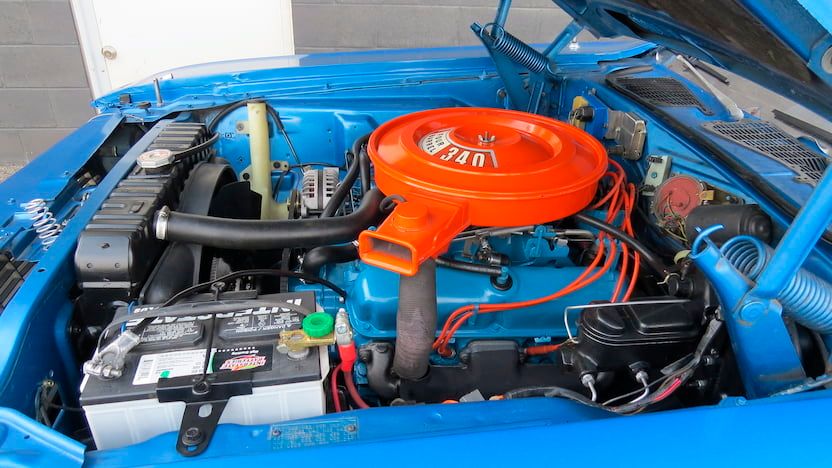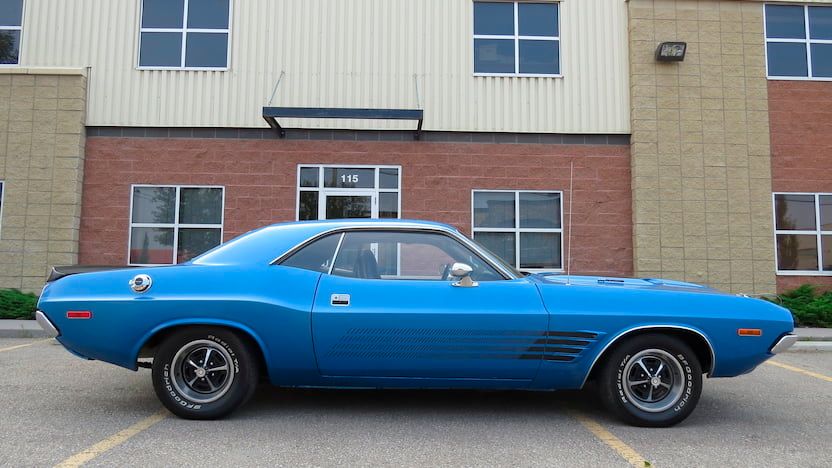The 1972 Dodge Challenger is the epitome of the tired muscle car. Not yet bloated and altered beyond any recognition like the 1974 Mustang, but showing clear signs that the muscle car phenomenon was dead thanks to stringent emission and safety regulations that turned all of America's muscle to mild fat.
The Challenger, which debuted in 1970, has somewhat always lived in the shadow of the bigger Charger but, there, it had a life of its own. It raced to some success in the then-sprawling SCCA-governed Trans-Am Series, and that spawned a highly popular homologation special: the Challenger T/A. Then, things changed and new regulations swept away all of the big engines, so the 1972 Challenger was only available with a choice of three small block engines.
To make it even more evident that the status quo had changed, Dodge decided to give the Challenger a makeover. Basically, the body itself remained unchanged, but the car sported different front and rear sections which made it, arguably, uglier than the original iteration. With that being said, it's unarguably still a work of art compared to the generic Japanese car Dodge decided to rebrand as a 'Challenger' in 1977...
1972 Dodge Challenger
- Make: Array
- Model: 1972 Dodge Challenger
- [do not use] Vehicle Model: Array
1972 Dodge Challenger Exterior
Up front, the most noticeable change is the two-piece grille that's cut across by the bumper. The grille's shape earned it the nickname 'sad mouth' or 'egg crate' and it's easy to see why. The upper grille is shaped like a widened U sitting on its head, with a crisscrossing mesh featuring the 'Challenger' name on the right-hand side, while the lower grille that's just under the chromed bumper has the exact opposite shape giving you the impression that it's one continuous element. The grille itself is actually poking forward from the cavity of the front fascia which also houses the quad headlights, two on each side of the 'sad mouth'.
Below the bumper, which follows the line of the front bodywork being partially integrated into the front bodywork, there are two orange-tinted round indicators on either side which spring out.
From the side, the first thing you notice on the '72 Challenger - at least on the Rallye version - are the four side scoops. Four fading stripes sprout from the scoops and they extend as far back as the end of the doors. This was supposed to be a sporty-looking add-on that made some sense given the graphics used back in the '70s but that looks extra tacky now, in 2018.
You'll also notice the two extra rectangular indicators on the front and rear overhangs due to new safety regulations.
This particular Challenger, painted in the nice B5 blue tint, is fitted with the 14-inch W23 hubcaps with a chromed trim ring and spokes. The car also has hood pins and a fixed rear ducktail spoiler.
Talking about the rear end, this is where the rest of the modifications were to be found when talking about the differences between the 1971 and the 1972 model year. The quad taillights, which are fitted inside four squared-off holes in the Challenger's rear are positioned at an angle which gives the rear fascia a bit of a cross-eyed look.
The middle panel which hosts the taillights is black, like the rear spoiler, and is framed by a bar that wraps itself around the top edge of the trunk and the rear corners.
The only body style that was available for the 1972 Challenger was the one seen here: the hardtop. That's because the convertible was discontinued at the end of 1971. You could get your hardtop painted in the color of the bodywork or have it colored in black to match the hood stripes, rear spoiler, and other elements. A sunroof became widely available.
1972 Dodge Challenger Exterior Dimensions:
|
Length: |
191.3 inches |
|
Width: |
76.3 inches |
|
Height: |
50.9 inches |
|
Wheelbase: |
110 inches |
1972 Dodge Challenger Interior
The interior of the 1972 Challenger is virtually identical to that of the previous years but Dodge removed some optional extras that customers could've opted for. Such an example is the disappearance of the leather upholstery seats or the power-assisted seats and windows.
This car comes with a minuscule center console which features three more gauges. The front seats are generous inside but lack side bolstering. There's also room aplenty in the back.
1972 Dodge Challenger Drivetrain
The 1972 Challenger rolled with the wind of change. Unleaded fuel became the norm that year and, to compound to the situation, new safety, and EPA emission mandates saw car manufacturers scramble to follow suit. Also, according to the FCA, "SAE revised the torque and horsepower rating test from a “gross” to a “net” as installed in the cars. This reduced all ratings 20–30 percent, making them non-comparable to previous ratings".
Due to lower compression ratios to pass emission limits, the basic slant-6 engine only made some 112-horsepower in 1972. Similarly, the 5.2-liter V-8 was putting out 152-horsepower. That's some 80 horsepower down to the power output of the 1970-1971 version and it's not only due to the different way the SAE said that outputs should be displayed - from a 'gross' rating to a 'net' rating. The beginning of the choked engines had begun, but it wasn't at its mid-to-late-'70s peak just yet.
The Rallye version, which replaced the R/T, was the one that usually received the 340 5.6-liter V-8. That engine only developed 240 net horsepower in 1972 at 4,800 rpm with an 8.5:1 compression ratio. Max torque was 393 pound-feet at 3,600 rpm.
In spite of the 3,360 pounds curb weight and the decreased power output, the fastest 1972 Challenger could still reach 60 mph in under 9 seconds and complete a quarter-mile run in 16 seconds. The car could theoretically exceed 130 mph.
You could choose one of three gearbox options if you bought your Challenger 46 years ago.
The suspension was independent up front with a wishbone and a trailing link torsion bar. At the back, there was a live axle which supported semi-elliptic leaf springs. A 3.23:1 ratio 8.75-inch axle was standard on the Rallye with a 3.55:1 "sure grip" limited slip unit optional. The stabilizer bar at the back which came with the 'big-engine' Challengers improved the car's handling. That was just about the only redeeming driving-related element of the 1972 model year.
Braking power was offered by drums all around although disc brakes were available as an option at the front.
1972 Dodge Challenger Specifications
|
Engine manufacturer: |
Chrysler LA-series V-8 340 pushrod OHV, |
|
Engine type: |
spark-ignition 4-stroke |
|
Fuel feed: |
Carter 4-barrel carburetor |
|
Charge system: |
naturally aspirated |
|
Valves per cylinder: |
2 |
|
Cylinders alignment: |
V-8 |
|
Displacement: |
5.6-liter |
|
Bore x Stroke: |
4.04 in x 3.31 in |
|
Compression ratio: |
8.5 : 1 |
|
Horsepower net: |
240 hp at 4,800 rpm (SAE net) |
|
Torque net: |
290 pound-feet of torque |
|
Suspension: |
Independent at front, live axle at rear |
|
Brakes: |
Drums or optional discs at front |
1972 Dodge Challenger Pricing
The 1972 Challenger wasn't a hit. In fact, only two years later, the model was discontinued altogether and it only returned in 1977 as a rebranded Mitsubishi Galant Lambda Coupe. In total, around 23,000 Challengers were sold in 1972 with little over 8,000 of them being pure Rallye cars with V-8s. The car we see here isn't a genuine Rallye model but features some of the key Rallye exterior features such as the side air scoops.
But the basic 1972 Challenger isn't rare. You can get a rough one for $12,000 and one in great condition for about $30,000. Low mileage Rallye examples might go for as much as $40,000 but that's about as far as a Challenger can stretch its legs in terms of price. Granted, there were a few convertible examples built with the 1972 front and rear elements as special vehicles commissioned for TV shows and those should be crazy expensive to buy.
1972 Dodge Challenger Competition
Pontiac GTO
The 1972 Pontiac GTO was still very similar to that of 1971 featuring the same twin rectangular grille and double headlights. It's worth noting that the GTO was no longer a stand-alone model but, rather, a special option sold as part of the Le Mans range. You could have your GTO as a pillared coupe or a hardtop with Rally II and honeycomb wheels optional on all GTOs.
The standard 400 6.5-liter engine was down to 250 net horsepower at 4,400 rpm and 325 pound-feet of torque at 3,200 rpm. There was also the 455 HO 7.4-liter engine that had 415 pound-feet of torque but the same official power output. Unofficially, the 455 HO had 300 horsepower despite its 8.4:1 compression ratio. Only 5,811 GTOs were built in 1972 and just 646 of them came with the big 7.4-liter engine. The 45% drop in sales saw the GTO completely change for 1973 when it adopted the A-body design.
The 1972 GTO is arguably closer to a muscle car as known in the 1967-1970 bracket but is it a better car than the Challenger? The Dodge owners will adamantly claim that their cars handle better than most other coupes and that could be true. Also, the Challenger has a sleeker body than the more angular GTO.
Read our full history review on the Pontiac GTO.
Chevrolet Camaro
The second-generation Camaro debuted with radically new - and substantially uglier, in my view - styling in 1970. By 1972, a strike and the new emission rules and regulations saw GM almost drop the Camaro model altogether but, thankfully, they knew better and over 65,000 Camaros were sold in '72 despite the strike.
The Camaro, now based on the F-Body, was still available with a two or four-headlights setup and, also, you could opt for a two-piece grille earlier on before safety regulations took the helm and mandated the full-length grille.
On a different topic, the much-lamented emission regulations and the directive to show net engine outputs saw the figures drop significantly. As such, the LT1 5.7-liter engine was now rated at 255 horsepower (75 horsepower less than in 1971) while the big-block 6.5-liter V-8 only developed 240 net horsepower compared to 300 the previous year.
You might be inclined to pick a Camaro over a Challenger even if only due to the fact that many more were sold which means many more are up for grabs at more convenient prices.
Read our full review on the 1970 - 1981 Chevrolet Camaro.
Final Thoughts
The 1972 Challenger is a vivid representation the change in the domestic car production landscape that happened in the '70s. The shift from performance to apparent efficiency-based rulesets that eventually killed the spirit of the bulk of America's muscle cars and many of the performance cars.
By the peak of the oil crisis that followed, you could only find beefy unbridled engines on trucks while standard sedans and coupes could barely move about strangled by emission and fuel consumption-related laws.
Further reading
Read our full history review on the 1970 - 1983 Dodge Challenger.

